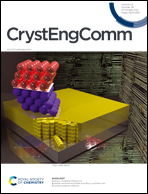Binary V–Mo sulfides grown on CNTs with morphological and electronic modulation for enhanced hydrogen evolution†
Abstract
Transition metal sulfides, such as molybdenum sulfide and vanadium sulfide, have recently attracted substantial attention due to their potential application to the catalysis of the hydrogen evolution reaction (HER). Alloying is one of the powerful methods to exceed the intrinsic properties of pure metals. In this study, we report a simple one-step sintering method to synthesize MoS2, V1.5S2 and V–Mo–S alloys on carbon nanotubes (CNT/VMoS). Due to its compositional, morphological and electrical superiorities, the CNT/VMoS-2 catalyst recorded the optimal HER activity with a low overpotential of −146 mV at 10 mA cm−2, a low Tafel slope of 61 mV dec−1 and a very small Rct value of 8.8 Ω, which were superior to CNT/MoS2, CNT/V1.5S2 and other CNT/VMoS catalysts in acidic media, holding a great promise for practical water-splitting applications. We believe that the present work could broaden our horizon about the preparation of other transition metal sulfide alloys and provide a platform to understand the fundamental catalytic mechanism for improving HER performance.

- This article is part of the themed collection: Nanomaterials


 Please wait while we load your content...
Please wait while we load your content...